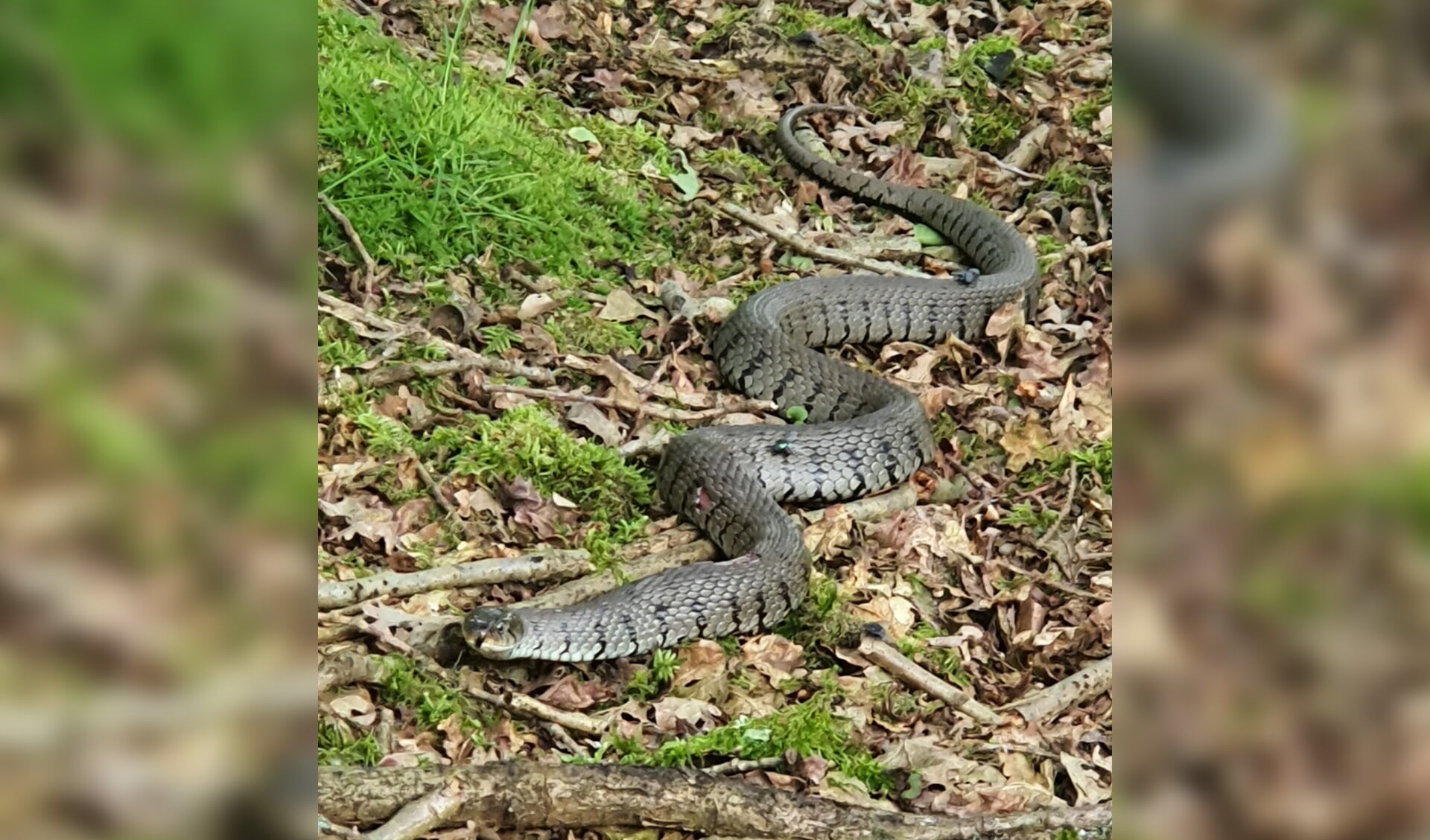general
cling Snakes are very rare in Zeeland. This is because the extensive reclaimed landscape is not a suitable habitat. In addition, snakes have limited ability to spread. The small wooded landscapes of the Zeeuws-Vlaanderen border region provide most opportunities, but grass snakes are also rare in neighbouring Belgium.
For the past five years there have been several reports of young grass snakes each year in the Klingsee Forest and nearby Straubersbos. It is very special that there have already been 3 reports of adult grass snakes this year. They can grow up to 4 feet long and are not venomous.
Grass snakes are shy and quickly flee in case of danger. Two reports came from the Klings Forest (managed by Het Zeeuwse Landschap and Evides) and one from Stropersbos. A unique asset for the area. We hope that this small population will survive and expand.
What does a grass snake need?
Adult grass snakes feed on amphibians, mice and fish. They are often found in a humid environment, in or near water. Young grass snakes live on invertebrates. Worms and mollusks are on the menu. There are enough of them this year. In addition, grass snakes like peace and quiet and lots of hiding places. Fallen dead trees in the Clingse forests provide good shelter.
Each spring, grass snakes lay 20-30 eggs per clutch in compost piles, leaf piles, manure piles, or rotten logs. Creating breeding grounds out of horse manure or manure is a very successful way to help grass snakes reproduce, but it is also beneficial to many other animals.
lizard
One species that does not do well is the viviparous lizard. Until a few decades ago, this reptile was found widespread in a number of locations in the border region. They like small-scale landscapes with wet meadows, wastelands and forest edges.
Many habitats have become unsuitable due to drought and fragmentation. Just like grass snakes, they are often killed. Also on bike paths. They warm up in the sun on the road and then don’t leave quickly enough. Crowded bike paths through the habitat can be a disaster.
An important part of the habitat is having open spaces for sunbathing. If the habitat becomes overgrown with tall plants, it will be abandoned.
hard to notice
The number of this lizard has declined sharply in the Netherlands and it has not been seen in our country for some time. The last observations were made five years ago in the forest of Klingsee, Schomling and the old railway track in Hulst. It is possible that there are some lizards, as they are shy and difficult to observe.
Viviparous lizards eat mainly arthropods, including many spiders. They have 3 to 8 young per year. This is not very many for a species that lives for a few years at most.
Sunbathing is important.
In bad weather, the lizard takes shelter on stones, fallen tree trunks or in holes. In sunny weather, they are often seen basking vertically on tree trunks.
Sunbathing is important for a live lizard. Once a lizard is warmed up, it warms up much faster and is better at hunting prey and escaping enemies.
Lizards are often confused with salamanders. Salamanders live part of the time in the water and most of the time on land. They are much slower than lizards. So always try to take a picture so we can check if it is really a lizard.
It is also helpful to take a photo of the grass snake. Each snake has a unique stripe pattern. This way we can see how many different animals live there. Observations can be reported via the website www.waarneming.nl.
Alex Wieland, Director of Water Extraction Forests on behalf of the Het Zeeuwse Landschap Foundation.

“Thinker. Coffeeaholic. Award-winning gamer. Web trailblazer. Pop culture scholar. Beer guru. Food specialist.”







More Stories
Comet Tsuchinshan-Atlas is ready to shine this fall
Sonos isn’t bringing back its old app after all
Indiana Jones and the Great Circle is coming to PS5 in spring 2025